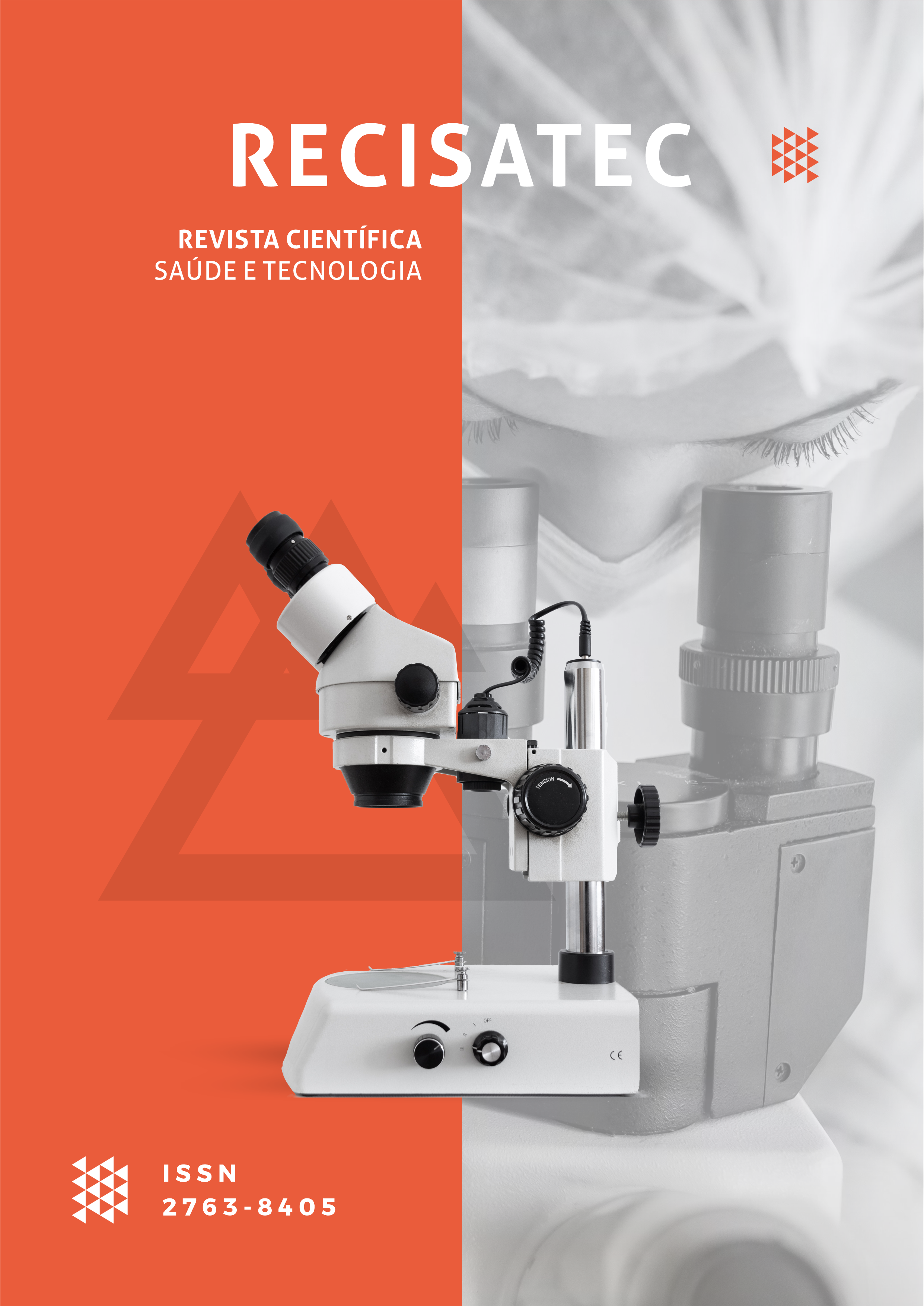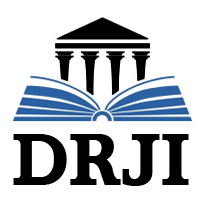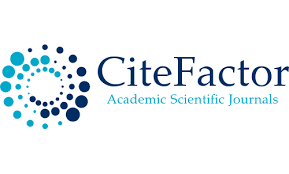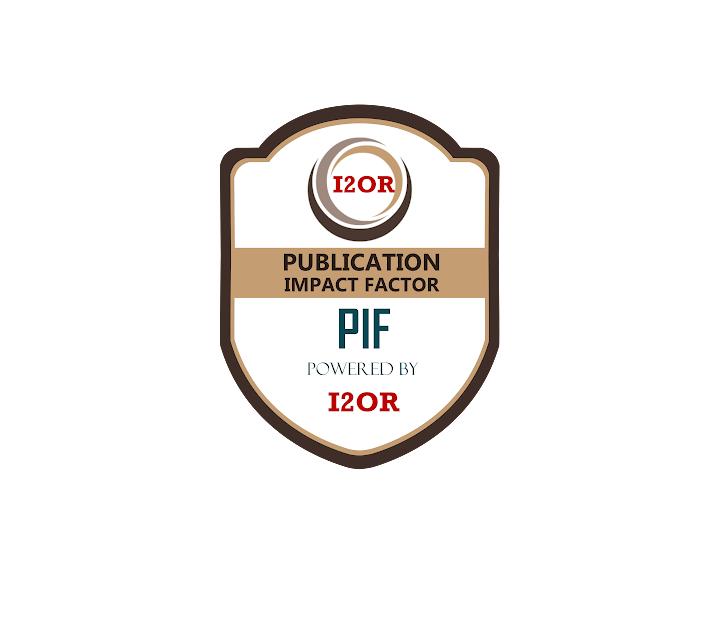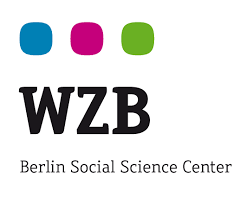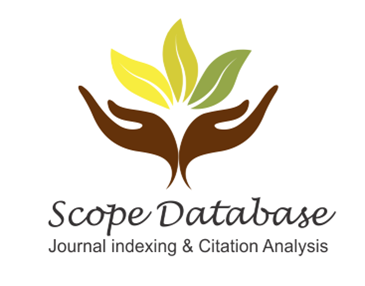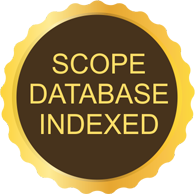FATORES ASSOCIADOS À OBESIDADE: UMA BREVE REVISÃO NARRATIVA
DOI:
https://doi.org/10.53612/recisatec.v2i5.108Palavras-chave:
Obesidade, Fatores Ambientais, Genética, Metabolismo.Resumo
Considerada um problema de saúde pública, a obesidade é uma patologia comumente observada em todas as faixas etárias, não distingue sexo, posição social ou classe econômica. Estudos apontam uma afinidade entre vários fatores e o estilo de vida e suas correlações, produzindo um quadro de sobrepeso, tendo como produto final a adiposidade. Sendo assim, o presente estudo teve como objetivo realizar uma revisão bibliográfica narrativa informando e atualizado os recentes e mais significativos estudos sobre o tema. Foram selecionados artigos nacionais e internacionais entre os anos de 2010 e 2020 nas bases de dados Scientific Electronic Library Online (Scielo), Portal Periódicos Capes, US National Library of Medicine National Institutes of Health Search database (PubMed) e Science Medline. O montante dessa revisão apontara correlação significativa entre os fatores ambientais, comportamentais, genético e fisiológicos como determinantes no processo de aquisição da obesidade. Apesar ser multifatorial as causas da obesidade o fator ambiental é visto como um dos principais determinantes para o aumento desta patologia, na forma em que estimula o consumo exagerado de calorias combinado a um gasto energético diminuído.
Downloads
Referências
ALPERT, M.A.; OMRAN, J.; BOSTICK, B.P. Effects of obesity on cardiovascular hemodynamics, cardiac morphology, and ventricular function. Current obesity reports, 5(4), 424-434.2016 DOI: https://doi.org/10.1007/s13679-016-0235-6
BLEICH, S.N.; VERCAMMEN, K.A.; ZATZ, L.Y.; FRELIER, J.M.; EBBELING, C.B.; PEETERS, A. Interventions to prevent global childhood overweight and obesity: a systematic review. The Lancet Diabetes & Endocrinology, 6(4), 332-346.2018. DOI: https://doi.org/10.1016/S2213-8587(17)30358-3
BORER, K.T. Counterregulation of insulin by leptin as key component of autonomic regulation of body weight. World journal of diabetes, 5(5), 606.2014 DOI: https://doi.org/10.4239/wjd.v5.i5.606
BRAY, G.A.; KIM, K.K.; WILDING, J.P.H.; World obesity federation. Obesity: a chronic relapsing progressive disease process. A position statement of the World Obesity Federation. Obesity Reviews, 18(7), 715-723.2017. DOI: https://doi.org/10.1111/obr.12551
BRENNAN-OLSEN, S L.; SOLOVIEVA, S.; VIIKARI-JUNTURA, E.; ACKERMAN, I.N., BOWE, S.J.; KOWAL, P.; PAGE, R.S. Arthritis diagnosis and symptoms are positively associated with specific physical job exposures in lower-and middle-income countries: cross-sectional results from the World Health Organization’s Study on global AGEing and adult health (SAGE). BMC public health, 18(1), 719.2018 DOI: https://doi.org/10.1186/s12889-018-5631-2
BRIGGS, D.I.; ENRIORI, P.J.; LEMUS, M. B.; COWLEY, M.A.; ANDREWS, Z.B. Diet-induced obesity causes ghrelin resistance in arcuate NPY/AgRP neurons. Endocrinology, 151(10), 4745-4755.2010. DOI: https://doi.org/10.1210/en.2010-0556
BRIGGS, D.I.; LOCKIE, S.H.; WU, Q.; LEMUS, M.B.; STARK, R.; ANDREWS, Z.B. Calorie-restricted weight loss reverses high-fat diet-induced ghrelin resistance, which contributes to rebound weight gain in a ghrelin-dependent manner. Endocrinology, 154(2), 709-717.2013. DOI: https://doi.org/10.1210/en.2012-1421
BROWN, K.; DECOFFE, D.; MOLCAN, E.; GIBSON, D.L. Diet-induced dysbiosis of the intestinal microbiota and the effects on immunity and disease. Nutrients, 4(8), 1095-1119. 2012 DOI: https://doi.org/10.3390/nu4081095
CARVALHO, F.C.; MAGNO, M.; GUARANÁ, H.C.; PROENÇA, A.C.; CABELLO, G.M.K. CARNEIRO, J.R.I.; ROSADO, E.L. Influence of FTO rs9939609 polymorphism on appetite, ghrelin, leptin, IL6, TNFα levels, and food intake of women with morbid obesity. communities, 9, 10.2018.
HAKRABORTI, C.K. New-found link between microbiota and obesity. World journal of gastrointestinal pathophysiology, 6(4), 110.2015 DOI: https://doi.org/10.4291/wjgp.v6.i4.110
COTTRELL, E.C.; MERCER, J.G. Leptin receptors. Appetite Control, 3-21.2012. DOI: https://doi.org/10.1007/978-3-642-24716-3_1
CRUM, A.J.; CORBIN, W.R.; BROWNELL, K. D.; Salovey, P. Mind over milkshakes: mindsets, not just nutrients, determine ghrelin response. Health Psychology, 30(4), 424.2011 DOI: https://doi.org/10.1037/a0023467
CUI, H.; LÓPEZ, M.; RAHMOUNI, K. The cellular and molecular bases of leptin and ghrelin resistance in obesity. Nature Reviews Endocrinology, 13(6), 338.2017 DOI: https://doi.org/10.1038/nrendo.2016.222
CZYZYK, T.A.; SAHR, A.E.; STATNICK, M.A.A model of binge‐like eating behavior in mice that does not require food deprivation or stress. Obesity, 18(9), 1710-1717.2010. DOI: https://doi.org/10.1038/oby.2010.46
DE ANDRADE AOYAMA, E.; MACEDO, W.D.L.R.; DE SOUSA, J.G.; DE FREITAS, M.M.; LEMOS, L.R. Genetics and the environment as majores risk factors for obesity. Brazilian Journal of Health Review, 1(2), 477-484.2018.
DE CASTRO, J. M.; FERREIRA, E.F.; DA SILVA, D.C.; DE OLIVEIRA, R.A.R. Prevalence of overweight and obesity and the risk factors associated in adolescents. Revista Brasileira de Obesidade, Nutrição e Emagrecimento, 12(69), 84-94.2018.
De Freitas, M.C.; de Moura, V.E.L.; do Nascimento Malta, T.E.; Ribeiro, S.L.G.; Rossi, F.E. Supressão do apetite induzida pelo exercício físico: possíveis mecanismos. Conexões, 18, e020034-e020034. 2020. DOI: https://doi.org/10.20396/conex.v18i0.8657880
DE REZENDE, L.F.M.; LOPES, M.R.; REY-LÓPEZ, J. P.; MATSUDO, V.K.R.; DO CARMO LUIZ, O. Sedentary behavior and health outcomes: an overview of systematic reviews. PloS one, 9(8), e105620.2014. DOI: https://doi.org/10.1371/journal.pone.0105620
DE GRUTTOLA, A.K.; LOW, D.; MIZOGUCHI, A.; MIZOGUCHI, E. Current understanding of dysbiosis in disease in human and animal models. Inflammatory bowel diseases, 22(5), 1137-1150.2016. DOI: https://doi.org/10.1097/MIB.0000000000000750
DIETERICH, W.; SCHINK, M.; ZOPF, Y. Microbiota in the gastrointestinal tract. Medical Sciences, 6(4), 116.2018. DOI: https://doi.org/10.3390/medsci6040116
ENTRINGER, S.; BUSS, C.; SWANSON, J. M.; COOPER, D.M.; WING, D.A.; WAFFARN, F.; WADHWA, P.D. Fetal programming of body composition, obesity, and metabolic function: the role of intrauterine stress and stress biology. Journal of nutrition and metabolism, 2012. DOI: https://doi.org/10.1155/2012/632548
FAIENZA, M. F.; WANG, D. Q.; FRÜHBECK, G.; GARRUTI, G.; PORTINCASA, P. The dangerous link between childhood and adulthood predictors of obesity and metabolic syndrome. Internal and emergency medicine, 11(2), 175-182.2016. DOI: https://doi.org/10.1007/s11739-015-1382-6
FEIJÓ, F.D.M.; BERTOLUCI, M.C.; REIS, C. Serotonin and hypothalamic control of hunger: a review. Revista da Associação Médica Brasileira, 57(1), 74-77.2011. DOI: https://doi.org/10.1016/S0104-4230(11)70020-3
FRANCISCO, L.V.; DIEZ-GARCIA, R.W. Abordagem terapêutica da obesidade: entre conceitos e preconceitos. DEMETRA: Alimentação, Nutrição & Saúde, 10(3), 2015. 705-716.2015. DOI: https://doi.org/10.12957/demetra.2015.16095
GALI RAMAMOORTHY, T.; BEGUM, G.; HARNO, E.; WHITE, A. Developmental programming of hypothalamic neuronal circuits: impact on energy balance control. Frontiers in neuroscience, 9, 126.2915. DOI: https://doi.org/10.3389/fnins.2015.00126
GLUCKMAN, P.D.; HANSON, M.A. Developmental and epigenetic pathways to obesity: an evolutionary-developmental perspective. International journal of obesity, 32(7), S62-S71. 2008. DOI: https://doi.org/10.1038/ijo.2008.240
GODFREY, K.M.; COSTELLO, P.M.; LILLYCROP, K.A. The developmental environment, epigenetic biomarkers and long-term health. Journal of developmental origins of health and disease, 6(5), 399.2015. DOI: https://doi.org/10.1017/S204017441500121X
GONI, L, CUERVO, M.; MILAGRO F.I.; MARTÍNEZ, J.A. Future perspectives of personalized weight loss interventions based on nutrigenetic, epigenetic, and metagenomic data. J Nutr. 146(4):905S-912S.2016. DOI: https://doi.org/10.3945/jn.115.218354
GONZALEZ-BULNES, A.; CHAVATTE-PALMER, P. Contribution of large animals to translational research on prenatal programming of obesity and associated diseases. Current pharmaceutical biotechnology, 18(7), 541-551.2017. DOI: https://doi.org/10.2174/1389201018666170811150920
GUARANÁ H.C. Influência do SNP rs9939609 do gene Fat Mass and Obesity-Associated (FTO) na fome, saciedade e leptinemia de mulheres obesas (Doctoral dissertation, Universidade Federal do Rio de Janeiro).2016.
HALL, B.K. Evolutionary developmental biology. Springer Science & Business Media.2012.
HALL, K.D.; HEYMSFIELD, S.B.; KEMNITZ, J.W.; KLEIN, S.; SCHOELLER, D.A.; SPEAKMAN, J.R. Energy balance and its components: implications for body weight regulation. The American journal of clinical nutrition, 95(4), 989-994.2012. DOI: https://doi.org/10.3945/ajcn.112.036350
HILL, J.O.; WYATT, H.R.; PETERS, J. C. Energy balance and obesity. Circulation, 126(1), 126-132.2012. DOI: https://doi.org/10.1161/CIRCULATIONAHA.111.087213
HOBOLD, E.; DE ARRUDA, M. Prevalência de sobrepeso e obesidade de crianças e adolescentes no Brasil: uma revisão sistemática. Arquivos de Ciências da Saúde da UNIPAR, 18(3).2014. DOI: https://doi.org/10.25110/arqsaude.v18i3.2014.5195
IEBBA, V.; TOTINO, V.; GAGLIARDI, A.; SANTANGELO, F.; CACCIOTTI, F.; TRANCASSINI, M.; SCHIPPA, S. Eubiosis and dysbiosis: the two sides of the microbiota. New Microbiol, 39(1), 1-12.2016.
IRGISDOTTIR, B. E.; THORSDOTTIR, I. Seafood Consumption and Fasting Leptin and Ghrelin in Overweight and Obese. In Fish and Fish Oil in Health and Disease Prevention (pp. 185-191).2016. Academic Press. DOI: https://doi.org/10.1016/B978-0-12-802844-5.00016-6
UMPERTZ, R.; LE, D.S.; TURNBAUGH, P.J.; TRINIDAD, C.; BOGARDUS, C.; GORDON, J.; KRAKOFF, J. Energy-balance studies reveal associations between gut microbes, caloric load, and nutrient absorption in humans. The American journal of clinical nutrition, 94(1), 58-65.2011. DOI: https://doi.org/10.3945/ajcn.110.010132
KIMURA, I.; OZAWA, K.; INOUE, D.; IMAMURA, T.; KIMURA, K.; MAEDA, T.; TSUJIMOTO, G. The gut microbiota suppresses insulin-mediated fat accumulation via the short-chain fatty acid receptor GPR43. Nature communications, 4(1), 1-12.2013. DOI: https://doi.org/10.1038/ncomms2852
LAVEBRATT, C.; ALMGREN, M.; EKSTRÖM, T.J. Epigenetic regulation in obesity. International journal of obesity, 36(6), 757-765.2012. DOI: https://doi.org/10.1038/ijo.2011.178
LEVY, M.; KOLODZIEJCZYK, A.A.; THAISS, C.A.; Elinav, E. Dysbiosis and the immune system. Nature Reviews Immunology, 17(4), 219-232.2017 DOI: https://doi.org/10.1038/nri.2017.7
LI, T.; GAO, J.; DU, M.; MAO, X. Bovine α-lactalbumin hydrolysates ameliorate obesity-associated endotoxemia and inflammation in high-fat diet-fed mice through modulation of gut microbiota. Food & function, 10(6), 3368-3378.2019 DOI: https://doi.org/10.1039/C8FO01967C
LIMA, R.C.A.; JÚNIOR, L.C.C.; FERREIRA, L.L.R.; BEZERRA, L.T.L.; BEZERRA, T.T.L.; DA Conceição Lima, B. Principais alterações fisiológicas decorrentes da obesidade: um estudo teórico. SANARE-Revista de Políticas Públicas, 17(2).2018. DOI: https://doi.org/10.36925/sanare.v17i2.1262
LOGAN, I.E.; BOBE, G.; MIRANDA, C.L.; VASQUEZ-PEREZ, S.; CHOI, J.; LOWRY, M. B.; GOMBART, A.F. Germ-free swiss webster mice on a high-fat diet develop obesity, hyperglycemia, and dyslipidemia. Microorganisms, 8(4), 520.2020. DOI: https://doi.org/10.3390/microorganisms8040520
LUO, S.; O’CONNOR, S.G.; BELCHER, B.R.; Page, K.A. Effects of physical activity and sedentary behavior on brain response to high‐calorie food cues in young adults. Obesity, 26(3), 540-546.2018. DOI: https://doi.org/10.1002/oby.22107
MACHADO, F. R. Efeito da inibição da histona deacetilase 3 em um modelo de obesidade em camundongos. Universidade Federal do Pampa, Campus, Uruguaiana. 2018.
MAHER, C.A.; Mire, E.; Harrington, D.M.; Staiano, A.E.; Katzmarzyk, P.T. The independent and combined associations of physical activity and sedentary behavior with obesity in adults: NHANES 2003‐06. Obesity, 21(12), E730-E737.2013. DOI: https://doi.org/10.1002/oby.20430
MALAGUARNERA, M.; VACANTE, M.; ANTIC, T.; GIORDANO, M.; CHISARI, G.; ACQUAVIVA, R.; GALVANO, F. Bifidobacterium longum with fructo-oligosaccharides in patients with non alcoholic steatohepatitis. Digestive diseases and sciences, 57(2), 545-553.2012. DOI: https://doi.org/10.1007/s10620-011-1887-4
MARCELLO, M. A. Estudo molecular da adiponectina, grelina, leptina e resistina: estabelecendo as ligações entre a obesidade e o câncer de tireoide. Tese (doutorado) - Universidade Estadual de Campinas, Faculdade de Ciências Médicas, Campinas, SP. . 114 p. 2015.
MARIN, D. Associação dos polimorfismos G2548A e GLN223ARG com parâmetros antropométricos em mulheres saudáveis (Master's thesis). Dissertação (Mestrado) – Curso de Biotecnologia, Universidade do Vale do Taquari - Univates, 2015.
MESSINA, G.; DE LUCA, V.; VIGGIANO, A.; ASCIONE, A.; IANNACCONE, T.; CHIEFFI, S.; MONDA, M. Autonomic nervous system in the control of energy balance and body weight: personal contributions. Neurology research international, 2013. DOI: https://doi.org/10.1155/2013/639280
MIHALACHE, L.; GHERASIM, A.; NIŢĂ, O.; UNGUREANU, M.C.; PĂDUREANU, S.S. GAVRIL, R. S.; ARHIRE, L.I. Effects of ghrelin in energy balance and body weight homeostasis. Hormones, 15(2), 186-196.2016. DOI: https://doi.org/10.14310/horm.2002.1672
MILJKOVIC, D.; DE MIRANDA, S.H.; KASSOUF, A.L.; OLIVEIRA, F.C. Determinants of obesity in Brazil: the effects of trade liberalization and socio-economic variables. Applied Economics, 50(28), 3076-3088.2018. DOI: https://doi.org/10.1080/00036846.2017.1414939
MONTEIRO, M. P.; BATTERHAM, R.L. The importance of the gastrointestinal tract in controlling food intake and regulating energy balance. Gastroenterology, 152(7), 1707-1717.2017. DOI: https://doi.org/10.1053/j.gastro.2017.01.053
MÜLLER, M. J.; ENDERLE, J.; BOSY-WESTPHAL, A. Changes in energy expenditure with weight gain and weight loss in humans. Current obesity reports, 5(4), 413-423.2016. DOI: https://doi.org/10.1007/s13679-016-0237-4
MURPHY, E.F.; COTTER, P.D.; HEALY, S.; MARQUES, T.M.; O'SULLIVAN, O.; FOUHY, F.; SHANAHAN, F. Composition and energy harvesting capacity of the gut microbiota: relationship to diet, obesity and time in mouse models. Gut, 59(12), 1635-1642.2010. DOI: https://doi.org/10.1136/gut.2010.215665
OLOFSSON, L.E.; UNGER, E.K.; CHEUNG, C.C.; XU, A.W. Modulation of AgRP-neuronal function by SOCS3 as an initiating event in diet-induced hypothalamic leptin resistance. Proceedings of the National Academy of Sciences, 110(8), E697-E706.2013. DOI: https://doi.org/10.1073/pnas.1218284110
ORTEGA, F.B.; LAVIE, C.J.; BLAIR, S.N. Obesity and cardiovascular disease. Circulation research, 118(11), 1752-1770.2016. DOI: https://doi.org/10.1161/CIRCRESAHA.115.306883
PAIVA, A.C.T.; COUTO, C.C.D.; MASSON, A.P.D.L.; MONTEIRO, C.A.S.; FREITAS, C.F. Obesidade Infantil: análises antropométricas, bioquímicas, alimentares e estilo de vida. Revista Cuidarte, 9(3), 2387-2399.2018. DOI: https://doi.org/10.15649/cuidarte.v9i3.575
PAREDES-GONZALEZ, X.; KHOR, T.O.; SHU, L.; SAW, C.L.L., KONG, A.N.T. Overview of Obesity, Inflammation, and Cancer. In Inflammation, Oxidative Stress, and Cancer (pp. 42-61). CRC Press.2016.
PAULI, L.S.S. Papel do exercício físico na regulação da proteína rock em hipotálamo de camundongos obesos: efeitos sobre a sinalização da insulina e leptina.2017.
PEARSON, N.; BIDDLE, S.J. Sedentary behavior and dietary intake in children, adolescents, and adults: a systematic review. American journal of preventive medicine, 41(2), 178-188.2011. DOI: https://doi.org/10.1016/j.amepre.2011.05.002
PEREIRA, V.; RODRIGUES, C.; CORTEZ, F. Fatores genéticos, epigenómicos, metagenómicos e cronobiológicos da obesidade. Acta Portuguesa de Nutrição N. º 17, 17, 22-26.2019. DOI: https://doi.org/10.21011/apn.2017.1704
PERPÉTUO, J.P.; WILASCO, M.I.A.; SCHNEIDER, A.C.R. The role of intestinal microbiota inenergetic metabolism: new perspectives in combating obesity. Clinical and Biomedical Research, v. 35, n. 4, p. 196-199, 2015. DOI: https://doi.org/10.4322/2357-9730.60358
PINTO, R.P.; NUNES, A.A.; MELLO, L.M.D. Análise dos fatores associados ao excesso de peso em escolares. Revista Paulista de Pediatria, 34(4), 460-468.2016. DOI: https://doi.org/10.1016/j.rppede.2016.04.005
PRISTA, A. Sedentarismo, urbanização e transição epidemiológica António Prista. Revista Científica da UEM: Série Ciências Biomédicas e Saúde Pública, 1.2012.
PROCACCINI, C.; JIRILLO, E.; MATARESE, G. Leptin as an immunomodulator. Molecular aspects of medicine, 33(1), 35-45.2012. DOI: https://doi.org/10.1016/j.mam.2011.10.012
PULSFORD, R.M.; STAMATAKIS, E.; BRITTON, A.R.; BRUNNER, E.J.; HILLSDON, M.M. Sitting behavior and obesity: evidence from the Whitehall II study. American journal of preventive medicine, 44(2), 132-138.2013. DOI: https://doi.org/10.1016/j.amepre.2012.10.009
RABOT, S.; MEMBREZ, M.; BRUNEAU, A.; GÉRARD, P.; HARACH, T., MOSER, M.; CHOU, C. J. Germ‐free C57BL/6J mice are resistant to high‐fat‐diet‐induced insulin resistance and have altered cholesterol metabolism. The FASEB Journal, 24(12), 4948-4959.2010. DOI: https://doi.org/10.1096/fj.10.164921
RAJOKA, M.S.R.; SHI, J.; MEHWISH, H.M.; ZHU, J.; LI, Q.; SHAO, D.; YANG, H. Interaction between diet composition and gut microbiota and its impact on gastrointestinal tract health. Food Science and Human Wellness, 6(3), 121-130.2017. DOI: https://doi.org/10.1016/j.fshw.2017.07.003
RAMOS-LOBO, A.M.; DONATO Jr, J. The role of leptin in health and disease. Temperature, 4(3), 258-291.2017. DOI: https://doi.org/10.1080/23328940.2017.1327003
RECH, D.C.; BORFE, L.; Emmanouilidis, A.; Garcia, E.L.; Krug, S.B.F. As políticas públicas e o enfrentamento da obesidade no Brasil: uma revisão reflexiva. Revista de Epidemiologia e Controle de Infecção, 1(1), 192-202.2016. DOI: https://doi.org/10.17058/reci.v1i1.7974
ROMIEU, I.; DOSSUS, L.; BARQUERA, S.; BLOTTIÈRE, H.M.; FRANKS, P.W.; GUNTER, M.; WILLETT, W.C. Energy balance and obesity: what are the main drivers? Cancer Causes & Control, 28(3), 247-258.2017. DOI: https://doi.org/10.1007/s10552-017-0869-z
RONVEAUX, C.C.; TOMÉ, D.; RAYBOULD, H.E. Glucagon-like peptide 1 interacts with ghrelin and leptin to regulate glucose metabolism and food intake through vagal afferent neuron signaling. The Journal of nutrition, 145(4), 672-680.2015. DOI: https://doi.org/10.3945/jn.114.206029
ROSA, C.P.; BRANCAGLION, G.A.; MIYAUCHI-TAVARES, T.M.; CORSETTI, P.P.; DE ALMEIDA, L.A. Antibiotic-induced dysbiosis effects on the murine gastrointestinal tract and their systemic repercussions. Life sciences, 207, 480-491.2018. DOI: https://doi.org/10.1016/j.lfs.2018.06.030
ROSENBAUM, M.; KNIGHT, R.; LEIBEL, R.L. The gut microbiota in human energy homeostasis and obesity. Trends in Endocrinology & Metabolism, 26(9), 493-501.2015. DOI: https://doi.org/10.1016/j.tem.2015.07.002
RUBINO, F.; R'BIBO, S.L.; DEL GENIO, F.; MAZUMDAR, M.; MCGRAW, T.E. Metabolic surgery: the role of the gastrointestinal tract in diabetes mellitus. Nature reviews Endocrinology, 6(2), 102-109.2010. DOI: https://doi.org/10.1038/nrendo.2009.268
SALTIEL, A.R. New therapeutic approaches for the treatment of obesity. Science Translational Medicine, 8(323), 323rv2-323rv2. 2016. DOI: https://doi.org/10.1126/scitranslmed.aad1811
SAMBLAS, M.; MILAGRO, F.I.; GOMEZ-ABELLAN, P.; MARTINEZ, J.A.; GARAULET, M. Methylation on the circadian gene BMAL1 is associated with the effects of a weight loss intervention on serum lipid levels. J Biol Rhythms. 31(3):308-17.2016. DOI: https://doi.org/10.1177/0748730416629247
SANTANNA, S.; CAIADO, N.M.; DA SILVA, L. J. Neuromodulação Hipotalâmica: uma proposta terapêutica para obesidade. Revista de Medicina e Saúde de Brasília, 3(2).
2014.
SEGNI, M.D.; PATRONO, E.; PATELLA, L.; PUGLISI-ALLEGRA, S.; VENTURA, R. Animal models of compulsive eating behavior. Nutrients, 6(10), 4591-4609.2014. DOI: https://doi.org/10.3390/nu6104591
SEWAYBRICKER, L.E. Avaliação da disfunção hipotalâmica em crianças e adolescentes com obesidade = Evaluation of hypothalamic dysfunction in obese children and adolescents. 2016. 1 recurso online (87 p.). Tese (doutorado) - Universidade Estadual de Campinas, Faculdade de Ciências Médicas, Campinas, SP.
SMITH, C.J.; RYCKMAN, K.K. Epigenetic and developmental influences on the risk of obesity, diabetes, and metabolic syndrome. Diabetes, metabolic syndrome and obesity: targets and therapy, 8, 295.2015. DOI: https://doi.org/10.2147/DMSO.S61296
SOMINSKY, L.; SPENCER, S.J. Eating behavior and stress: a pathway to obesity. Frontiers in psychology, 5, 434.2014. DOI: https://doi.org/10.3389/fpsyg.2014.00434
SUMITHRAN, P.; PROIETTO, J. The defence of body weight: a physiological basis for weight regain after weight loss. Clinical Science, 124(4), 231-241.2013. DOI: https://doi.org/10.1042/CS20120223
TOBI, E.W.; SLAGBOOM, P.E.; VAN DONGEN, J.; KREMER, D.; STEIN, A.D.; PUTTER, H. Prenatal famine and genetic variation are independently and additively associated with DNA methylation at regulatory loci within IGF2/H19.PLoS One. 7(5):e37933.2012. DOI: https://doi.org/10.1371/journal.pone.0037933
VANDEVIJVERE, S.; CHOW, C.C.; HALL, K.D.; UMALI, E.; SWINBURN, B.A. Increased food energy supply as a major driver of the obesity epidemic: a global analysis. Bulletin of the World Health Organization, 93, 446-456.2015. DOI: https://doi.org/10.2471/BLT.14.150565
VITELLIO, P.; CELANO, G.; BONFRATE, L.; GOBBETTI, M.; PORTINCASA, P.; DE ANGELIS, M. Effects of Bifidobacterium longum and Lactobacillus rhamnosus on gut microbiota in patients with lactose intolerance and persisting functional gastrointestinal symptoms: A randomised, double-blind, cross-over study. Nutrients, 11(4), 886. 2019. DOI: https://doi.org/10.3390/nu11040886
WEFERS, J.; VAN MOORSEL, D.; HANSEN, J.; CONNELL, N.J.; HAVEKES, B.; HOEKS, J.; SCHRAUWEN, P. Circadian misalignment induces fatty acid metabolism gene profiles and compromises insulin sensitivity in human skeletal muscle. Proceedings of the National Academy of Sciences, 115(30), 7789-7794.2018. DOI: https://doi.org/10.1073/pnas.1722295115
WEISS, G.A.; HENNET, T. Mechanisms and consequences of intestinal dysbiosis. Cellular and Molecular Life Sciences, 74(16), 2959-2977.2017. DOI: https://doi.org/10.1007/s00018-017-2509-x
WELLS, J.C. An evolutionary perspective on the trans-generational basis of obesity. Annals of human biology, 38(4), 400-409.2011. DOI: https://doi.org/10.3109/03014460.2011.580781
WORLD HEALTH ORGANIZATION. Global status report on road safety. World Health Organization. 2015.
WÜHL, E. Hypertension in childhood obesity. Acta Paediatrica, 108(1), 37-43.2019. DOI: https://doi.org/10.1111/apa.14551
ZIGMAN, J.M.; BOURET, S.G.; ANDREWS, Z.B. Obesity impairs the action of the neuroendocrine ghrelin system. Trends in Endocrinology & Metabolism, 27(1), 54-63. 2016. DOI: https://doi.org/10.1016/j.tem.2015.09.010
ZIMBERG, I.Z.; DE MELO, C.M.; DEL RE, M.; DOS SANTOS, M.V.; CRISPIM, C.A.; LOPES, T.D.V.C.; DE MELLO, M.T. Relação entre apneia obstrutiva do sono e obesidade: uma revisão sobre aspectos endócrinos, metabólicos e nutricionais. RBONE-Revista Brasileira de Obesidade, Nutrição e Emagrecimento, 11(64), 250-260.2017
Downloads
Publicado
Como Citar
Edição
Seção
Categorias
Licença
Copyright (c) 2022 RECISATEC - REVISTA CIENTÍFICA SAÚDE E TECNOLOGIA - ISSN 2763-8405

Este trabalho está licenciado sob uma licença Creative Commons Attribution 4.0 International License.
Os direitos autorais dos artigos/resenhas/TCCs publicados pertecem à revista RECISATEC, e seguem o padrão Creative Commons (CC BY 4.0), permitindo a cópia ou reprodução, desde que cite a fonte e respeite os direitos dos autores e contenham menção aos mesmos nos créditos. Toda e qualquer obra publicada na revista, seu conteúdo é de responsabilidade dos autores, cabendo a RECISATEC apenas ser o veículo de divulgação, seguindo os padrões nacionais e internacionais de publicação.

